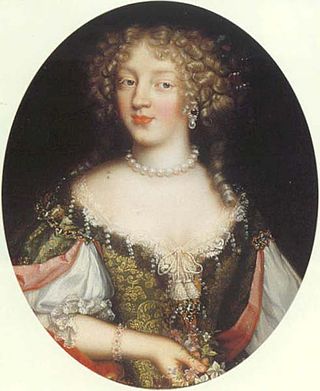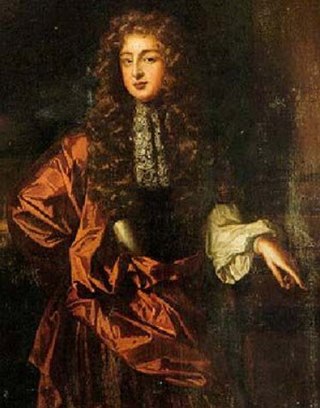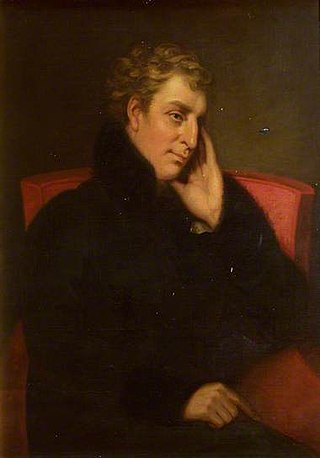Later life
In 1689 Dillon was one of the two members of parliament for County Westmeath in the House of Commons of the Patriot Parliament. [13] In that same year he served as Lord Lieutenant of County Roscommon. [14]
His father, the 7th Viscount, fell in the Battle of Aughrim on 12 July 1691 fighting under Saint-Ruhe against the Williamites under Ginkel. Henry succeeded as the 8th Viscount in the eyes of his Jacobite comrades, but his father had been attainted on 11 May 1691 and in the eyes of the victorious Williamites there was no title or estate for him to succeed to.
Lord Dillon, as he was now, was governor of Galway for the Jacobites. [18] Ginkel quickly marched down upon him from Aughrim and invested the town on 18 July. Dillon surrendered on the 26th on terms and marched out with his troops to Limerick. The Williamites laid siege to Limerick in August 1690. During a shelling of the town Dillon's mother Mary lost her life. The siege was lifted at the end of the month but a second siege followed in 1691 and lasted until the Williamite war in Ireland ended with the Treaty of Limerick signed on 8 October 1691.
While many of the Jacobites went into exile at the end of the war, an event called the Flight of the Wild Geese, Dillon stayed in Ireland and applied for the reversal of his attainder, which he obtained in 1694 by a judgement of the Court of the King's Bench and was confirmed by the Irish House of Lords in 1697. [22] He, therefore, got back his title and lands.

Frances Talbot, Countess of Tyrconnell, also called La Belle Jennings, was a maid of honour to the Duchess of York and, like her sister Sarah, a famous beauty at the Restoration court. She married first George Hamilton and then Richard Talbot, Earl of Tyrconnell. She was vicereine in Dublin Castle while Tyrconnell was viceroy of Ireland for James II. She lived through difficult times after the death of her second husband, who was attainted as a Jacobite, but recovered some of his wealth and died a devout Catholic despite having been raised as a Protestant.
John Butler, 17th Earl of Ormonde, 10th Earl of Ossory (1740–1795) was an Irish peer and Member of Parliament (MP). He became a Protestant in 1764. He was an Irish MP, representing Gowran between 1776 and 1783, and Kilkenny City between 1783 and 1792. In 1791, his right to the peerage was acknowledged in the Irish House of Lords and he became the 17th Earl of Ormond.

Claud Hamilton, 4th Earl of Abercorn PC (Ire) (1659–1691) was a Scottish and Irish peer who fought for the Jacobites in the Williamite War. He went with King James to Derry in 1689 and tried to negotiate the surrender of the town with Adam Murray. He raised a regiment of horse that he led in the defeats of Newtownbutler in 1689 and Aughrim in 1691. He was killed when the ship that should have brought him to France was intercepted by a Dutch privateer.

Theobald Dillon, 7th Viscount Dillon of Costello-Gallin supported King James II, was attainted on 11 May 1691, and fell in the Battle of Aughrim during the Williamite War. His attainder was reversed in favour of the 8th Viscount on 20 June 1694.

Lucas Dillon, 6th Viscount Dillon was an Irish peer who recovered title and lands after the restoration of King Charles II.

Charles Henry Dillon-Lee, 14th Viscount Dillon (1810–1865), was an Irish and English landowner. He lived in Ditchley, Oxfordshire, England, and was represented in Ireland by his agent Charles Strickland.

Charles Dillon, 10th Viscount Dillon (1701–1741) fought in the War of the Polish Succession for France under Berwick as colonel-proprietor of Dillon's Regiment at the Siege of Kehl in 1733 and the Siege of Philippsburg in 1734. After the armistice, he married, moved to Ireland, and succeeded his cousin Richard as the 10th Viscount Dillon.

Henry Augustus Dillon-Lee, 13th Viscount Dillon (1777–1832), was an Irish politician, soldier and writer. Despite being a Protestant, he supported Catholic emancipation in Ireland and wrote on the topic. He sat as MP for Harwich in England in the last parliament of Great Britain and the first parliament of the United Kingdom. In the second parliament of the United Kingdom he sat for County Mayo in Ireland. Through his daughter Henrietta, he was ancestor to Clementine Hozier and to the Mitford sisters.

Theobald Dillon, 1st Viscount Dillon, was an Irish military commander and adventurer. He held extensive lands in eastern Connacht and north-western Leinster, some acquired by sharp practices. He was a loyal supporter of Elizabeth I of England in her Irish wars.

Henry Dillon, 11th Viscount Dillon (1705–1787) was an Irish peer and a soldier in French service. He was the colonel proprietor of Dillon's Regiment, an Irish regiment of foot in French service, in 1741–1744 and again in 1747–1767. In the War of the Polish Succession (1733–1735), he fought at the sieges of Kehl and Philippsburg. In the War of the Austrian Succession (1740–1748), he was present at the Battle of Dettingen in 1743, on the French side, while King George II was present on the English side.
Arthur Dillon, Count Dillon (1670–1733) was a Jacobite soldier from Ireland who served as colonel of Dillon's Regiment in the Irish Brigade in French service. He fought in the Nine Years' War and in the War of the Spanish Succession where he excelled at the Battle of Cremona against Prince Eugene of Savoy.
Alexander MacDonnell, 3rd Earl of AntrimPC (Ire) was a Catholic peer and military commander in Ireland. He fought together with his brother Randal on the losing side in the Irish Confederate Wars (1641–1653); and then, having succeeded his brother as the 3rd Earl of Antrim in 1683, fought in the Williamite War (1688–1691), on the losing side again. Twice he forfeited his lands and twice he regained them.
Richard Butler of Kilcash was an Irish soldier and landowner, the third son of Thomas Butler, Viscount Thurles and brother of James, 1st Duke of Ormonde. He sided with the Irish Confederacy at the Irish Rebellion of 1641. He scouted the enemy on the morning of the Battle of Cloughleagh. His descendants succeeded to the earldom of Ormond when the senior branch of the family failed in 1758.

Colonel Thomas Butler of Garryricken, also known as Thomas Butler of Kilcash was an Irish Jacobite soldier. He commanded a regiment, Thomas Butler's foot, during the Williamite War and fought at the Battle of Aughrim in 1691 where he was taken captive. His son John would, de jure, become the 15th Earl of Ormond.
Sir William Talbot, 3rd BaronetPC (Ire) was the last of the Talbot baronets of Carton: his title was forfeited on account of his loyalty to King James II of England. He was an Irish politician and judge, who served briefly as Master of the Rolls in Ireland.
James Dillon, 1st Earl of Roscommon fought for the crown in the Nine Years' War. He was ennobled despite being a Catholic after his son Robert turned Protestant.
Carey or Cary Dillon, 5th Earl of Roscommon, PC (Ire) (1627–1689) was an Irish nobleman and professional soldier of the seventeenth century. He held several court offices under King Charles II and his successor King James II. After the Glorious Revolution he joined the Williamite opposition to James and was in consequence attainted as a traitor by James II's Irish Parliament in 1689. In that year he fought at the Siege of Carrickfergus shortly before his death in November of that year.
Ulick Burke, 1st Viscount Galway was an Irish army officer slain at the Battle of Aughrim while fighting for the Jacobites during the Williamite War in Ireland.
William Talbot of Ballynamony in County Wexford, also known as Wicked Will, was an Irish Jacobite. He represented Wexford Borough in the Patriot Parliament. He fought for James II during the Williamite War in Ireland at the Siege of Derry where he was wounded and captured. He died of his wounds while a prisoner in the besieged city.
Sir Henry Talbot an Irish Catholic landowner, who was elected MP for Newcastle Borough in 1640. His marriage made him a brother-in-law of Richard Talbot, 1st Earl of Tyrconnell.






